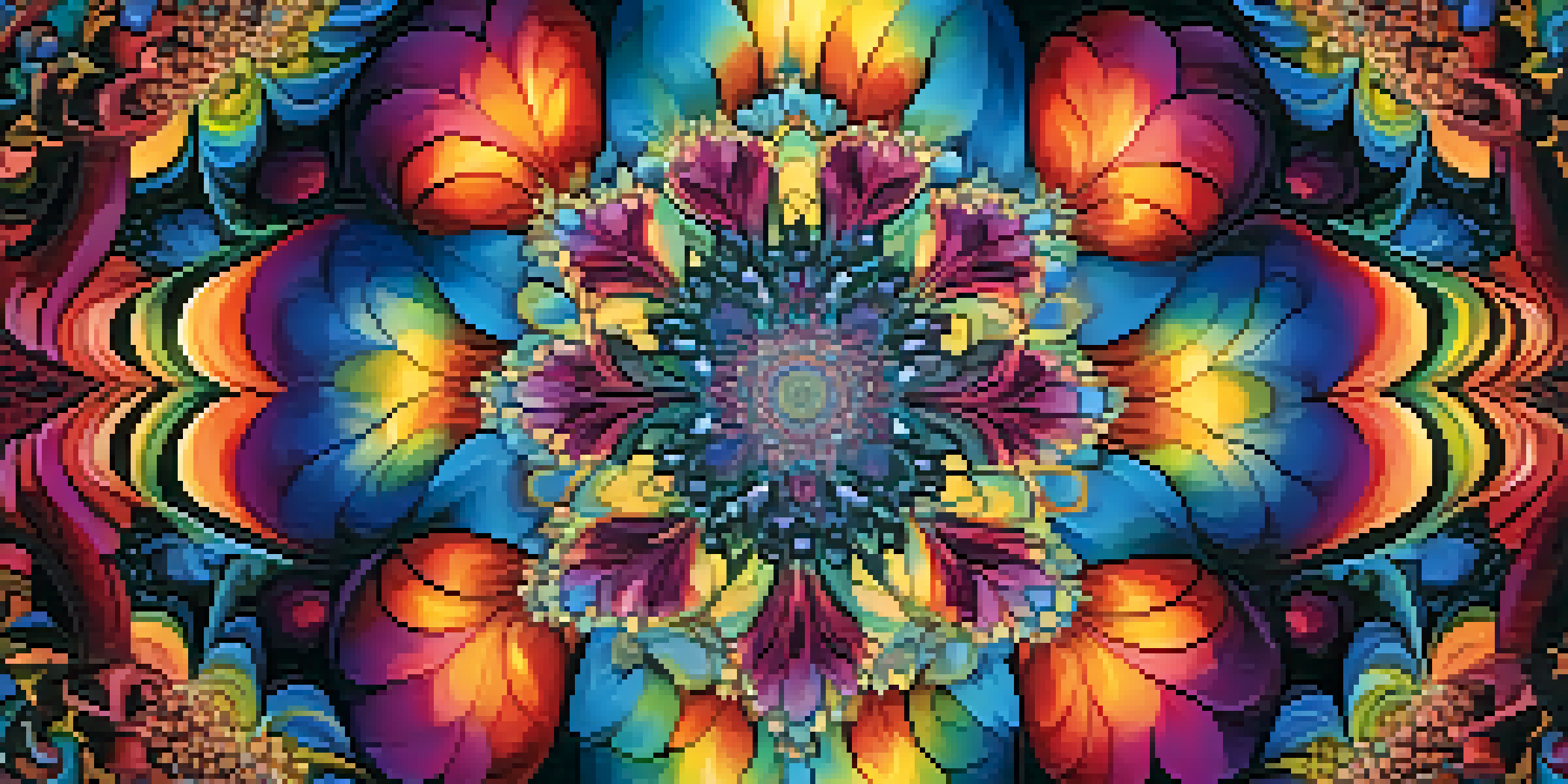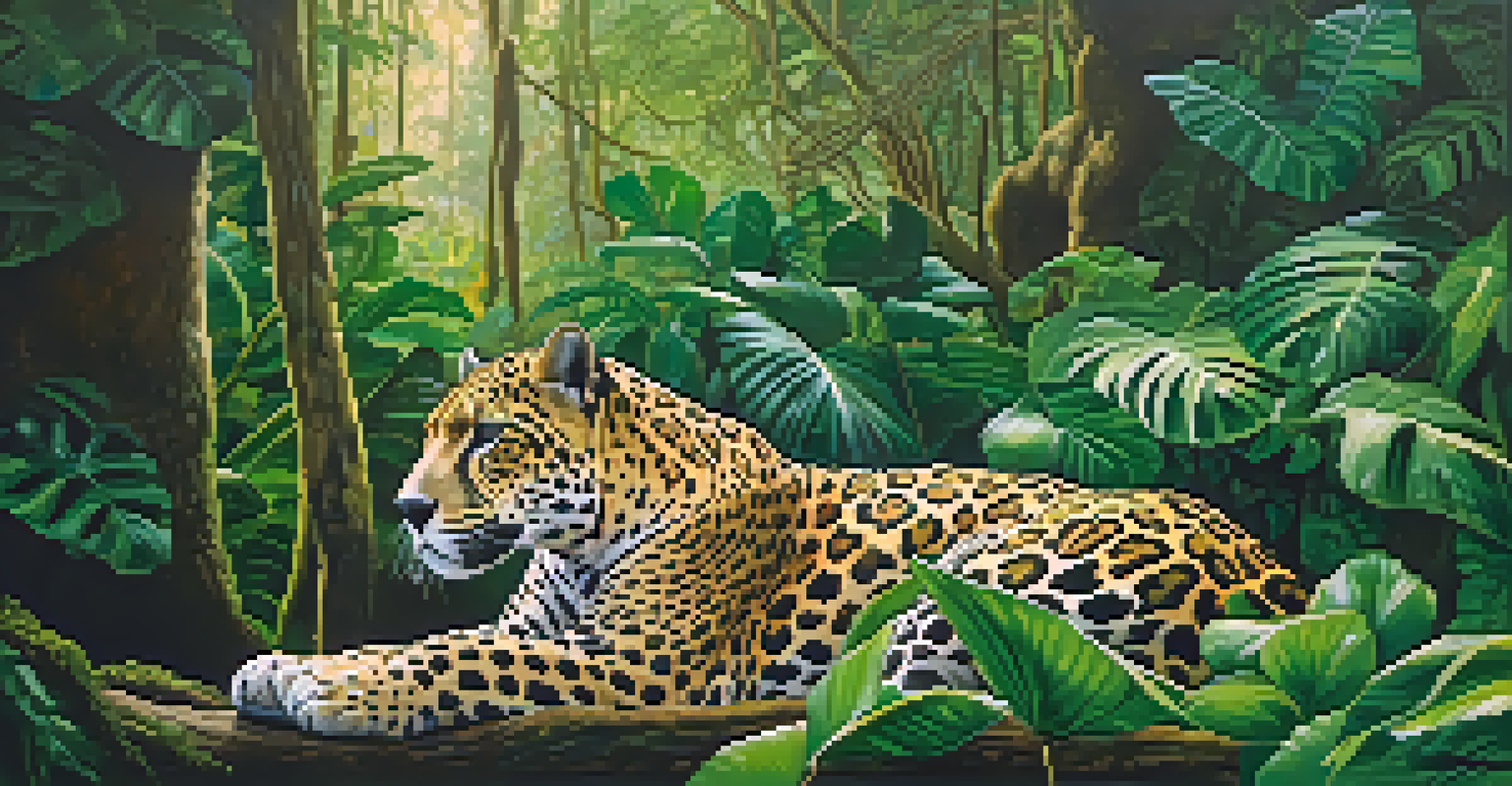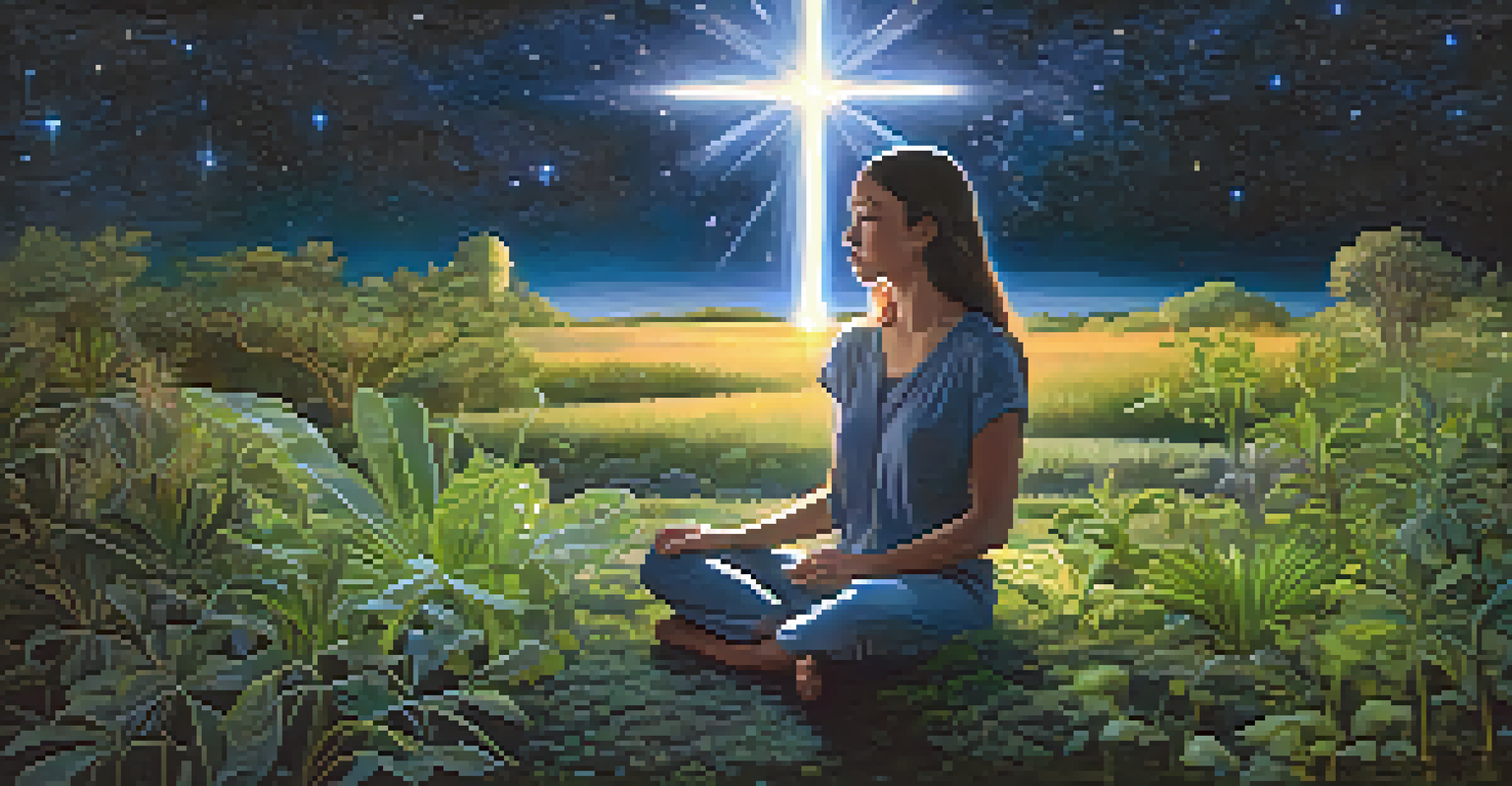Understanding Visual Hallucinations in Ayahuasca Trips

What Are Visual Hallucinations in Ayahuasca Trips?
Visual hallucinations during ayahuasca trips are vivid imagery that can occur when individuals consume this powerful brew. They often include intricate patterns, vibrant colors, and even scenes that feel deeply immersive. While some may see geometric shapes, others might experience more narrative-driven visuals, such as encounters with animals or spiritual beings.
The mind is everything. What you think you become.
These visual experiences are part of the broader effects of ayahuasca, which is known for its psychoactive properties stemming from its primary ingredient, DMT. The hallucinations can be both beautiful and overwhelming, leaving a lasting impression on those who partake in the journey. Understanding these visuals is essential for anyone looking to explore the depths of the ayahuasca experience.
Visual hallucinations can vary significantly from person to person, influenced by factors like mindset, environment, and individual expectations. This variability makes each trip unique, adding to the allure of ayahuasca for many seekers of spiritual insight.
The Science Behind Visual Hallucinations
At a fundamental level, visual hallucinations during ayahuasca trips are linked to how the brain processes sensory information. When DMT interacts with the brain's receptors, it can alter perception, leading to vivid images that aren’t present in the external environment. This neurochemical dance can create a reality that feels as real as the waking world.

Research suggests that these hallucinations may be tied to the brain's default mode network, which is responsible for self-referential thought and imagination. As this network becomes activated, individuals may experience a surge of creativity and insight, often manifesting as powerful visuals. This connection between brain activity and visual experience highlights the intricate interplay of chemistry and consciousness.
Visuals Reflect Inner Experiences
Visual hallucinations during ayahuasca trips often mirror personal insights and subconscious themes, leading to profound self-discovery.
Moreover, visual hallucinations can also reflect the subconscious mind, bringing forth symbols and themes relevant to the individual's life. This can lead to profound personal revelations, making the experience not just a visual spectacle but also a meaningful exploration of one's psyche.
Cultural Significance of Visual Hallucinations
Visual experiences during ayahuasca trips are not just personal; they hold significant cultural value in indigenous Amazonian traditions. In these cultures, the visuals are often interpreted as messages from the spirit world, guiding individuals on their journey. Shamans play a crucial role, helping participants understand and integrate their experiences within a larger spiritual framework.
The only journey is the one within.
Many traditional practices involve the use of specific chants and songs, known as 'icaros,' which are believed to influence the visuals experienced during the trip. These cultural rituals enhance the connection between the participant and the spiritual realm, showcasing how deeply intertwined visuals are with the community's beliefs and practices.
As ayahuasca gains popularity in the West, there’s a growing interest in understanding these cultural contexts. Recognizing the significance of visual hallucinations can help participants approach their experiences with respect and awareness, acknowledging that they are part of a rich tradition that extends beyond personal exploration.
Common Visual Hallucinations Experienced
Participants in ayahuasca ceremonies report a wide array of visual hallucinations, often categorized into common themes. Many describe seeing vibrant, swirling patterns reminiscent of fractals, which can evoke a sense of wonder and awe. These patterns can sometimes shift and change, creating a dynamic visual landscape that captivates the mind.
Another frequent experience involves encountering animals or mythological beings. These figures often carry symbolic meanings, providing insight or guidance during the trip. For instance, someone might see a jaguar, which represents strength and courage, encouraging them to confront personal fears or challenges.
Cultural Context Shapes Experiences
In indigenous traditions, visual experiences during ayahuasca journeys are seen as messages from the spirit world, emphasizing their cultural significance.
Some individuals also report experiencing a sense of interconnectedness with nature, feeling as if they are part of the universe itself. This profound visual experience can lead to moments of deep reflection and understanding, often resulting in lasting changes in perspective and behavior long after the trip has ended.
Managing Overwhelming Visual Experiences
While many people find the visuals of an ayahuasca trip enlightening, some may experience overwhelming sensations that can lead to anxiety or discomfort. It’s crucial to approach these experiences with an open mind and a willingness to surrender to the journey. Grounding techniques, such as focusing on breathing or touching the earth, can help individuals stay connected when visuals become intense.
Having a supportive guide or shaman can also make a significant difference. These experienced individuals can provide reassurance and help participants navigate challenging moments by offering insight and encouragement. Their presence can create a safe space, allowing individuals to explore their visual experiences without fear.
Ultimately, embracing the full spectrum of visual experiences—both awe-inspiring and challenging—can lead to personal growth. Understanding that these hallucinations are part of a larger process allows participants to integrate their experiences meaningfully, fostering resilience and insight.
Integration of Visual Experiences Post-Trip
After an ayahuasca trip, integrating the visual experiences into daily life is essential for personal growth. This process involves reflecting on the images and symbols encountered, considering their meaning, and how they relate to one’s life. Journaling can be a helpful tool in this phase, allowing individuals to capture their thoughts and insights.
Engaging in discussions with fellow participants or a therapist can also facilitate integration. Sharing experiences can provide different perspectives and help individuals process their visuals more deeply. This communal aspect can foster a sense of belonging and understanding as participants navigate their journeys together.
Integration Enhances Personal Growth
Reflecting on and integrating visual experiences after an ayahuasca trip is crucial for transforming insights into actionable changes in daily life.
Ultimately, the goal of integration is to carry the lessons learned from the visual experiences into everyday life. By doing so, individuals can transform their insights into actionable changes, leading to a more fulfilling and conscious existence.
The Role of Set and Setting in Visual Experiences
The concepts of 'set' and 'setting' play a crucial role in shaping the nature of visual hallucinations experienced during ayahuasca trips. 'Set' refers to the individual’s mindset—emotions, expectations, and mental state—while 'setting' pertains to the physical and social environment where the experience takes place. Both factors significantly influence the type of visuals encountered.
For instance, a positive mindset and a supportive environment can lead to more uplifting and insightful visual experiences. Conversely, a negative mindset or an uncomfortable setting may result in distressing visuals or anxiety. This underscores the importance of preparation and selecting the right environment for an ayahuasca ceremony.

Creating a conducive setting often involves elements such as comfortable seating, calming music, and a safe space for participants to express themselves. This intentional preparation allows individuals to fully engage with their visual experiences, making the journey more profound and meaningful.